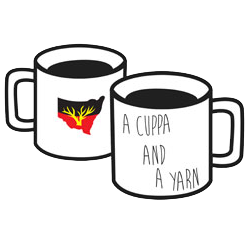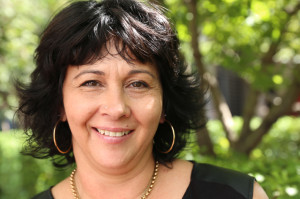31 March, 2015
Hello, my name is Diane Van Aken (nee Williams).
My mob is Wiradjuri. I grew up in a three bedroom, fibro commission house in Sadlier NSW.
My job title is Manager Administration, Records and Procurement. I am responsible for the management of records information, purchasing of office supplies/equipment, building maintenance (as relates to NSWALC tenancies) payment of rent and utilities for the councillors’ regional offices, acquisition and turnover of NSWALC’s motor vehicle fleet, corporate cards and registering contracts.
In a broader sense the Records and Administration Unit (John, Lesley and Pratima and myself) provide support to the other NSWALC Business Units, Councillors, Councillors Support Officers, LALCs and the Zone Office staff.
I will celebrate 23 years at NSWALC on the 10th September 2015. In regards to Land Rights my mother, Dorothy Williams (deceased 2008), inspired me. She always made sure that we were proud of our heritage and culture in the face of adversity and ensured that I became a member of Gandangara LALC by the time I was 19 (1989). My mother also founded an organisation called CAAP (Community Awareness of Aboriginal People) around 1984 (I was 14). This helped me to develop a stronger interest in Land Rights, and provided a greater insight into my mother’s passion for it.
I found the march that took place last year to protest the Crown Lands Amendment (Public Ownership of Beaches and Coastal Lands) Bill that resulted in it being deferred, very inspiring. That people power could have the effect of deferring a bill that would have long reaching ramifications to Aboriginal communities is amazing. My daughter Ayla Van Aken (24) also attended the march with me enabling the next generation to feel the passion of the older generation and to see that yes, people can make a difference, even against the government.
The Aboriginal Land Rights Act 1983 empowered Aboriginal people to make decisions about assets, land and in some cases land that had significant spiritual connections and how that land would be used. It gave Aboriginal people a voice and a platform to back it up.
I understand that in communities the land can hold significant spiritual meaning and those areas should be cherished and maintained. However in general where no cultural significance is evident the acquisition and sale of land by Local Aboriginal Land Councils is a platform to provide valuable resources and opportunities for Aboriginal communities. It’s paramount to the sustainability of the New South Wales Aboriginal Land Rights network.
Without a doubt there is a need for youth to be involved. The atrocities and lack of civil rights that occurred and spurred the birth of the Aboriginal Land Rights movement is not evident nor faced by today’s youth which is largely thanks to our forebears for having the guts to take a stand.
Do we still have racism? Absolutely! But the youth of today can go to school and obtain an education if they wish. My Mother could not progress past 6th grade because of the colour of her skin.
Without youth engagement there is the potential for the Land Rights movement to lose momentum. Besides after 32 years a fresh approach would be beneficial to the continued improvement of the Land Rights movement.


